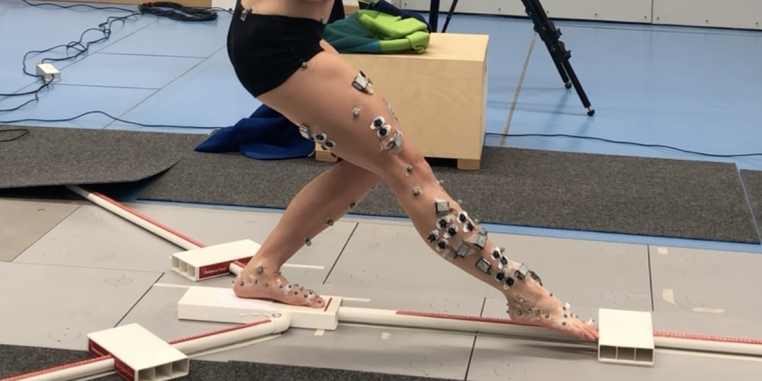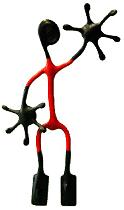Role of foot and ankle segments in balance and gait

In this part of the project, we investigated the motion of the foot segments using the Ghent Foot Model in healthy subjects to understand what happens during balance maintenance. Therefore, different balancing tasks were performed, differentiating between static and dynamic balance. Kinematic data is recorded and results are analyzed to understand which part of the foot is in motion when trying to keep balance. The aim is, to visualize and statistically prove that the individual foot segments account differently to balance and stability. If we understand which segment is doing what, we can redirect therapy and training methods to focus on foot segments in specific than rather only looking at the ankle joint as such. Moreover, no only therapeutic approaches may change but also the use of more complex foot models is be fostered during balance and motion analysis.
In a second step, we have looked into motion coupling of foot and ankle segments during gait and balance tasks. This is done by analysing how the segment of one segment in a certain plane is related to motion of another segment in the same or in a different plane. Several passive (ligaments, fascia) and active (muscles) structures link the segments and control their motions. Hence, analysing the coupling of the segments ay provide insight which structures control the motion of the foot during a specific task. For example, in the figure it shows that in balance dorsiflexion of the hallux (your big toe moving upwards towards your shin) is related to an eversion motion of the hind foot. This indicates, activation of the intrinsic foot muscles such as the Flexor hallucis bravis or Abductor hallucis. During gait, the opposite motion coupling occurs: hallux dorsiflexion if related to hind foot inversion. This indicates their relative motion is controlled by passive structures, such as the plantar fascia. These results are being prepared for scientific publication and conference presentations. In future, also the foot and ankle segment motion coupling will be analysed in other tasks, such as jumping or the more advanced Star Excursion Balance Test. Furthermore, we want to study the relationship between the foot and ankle segment coupling to foot muscle activity.


